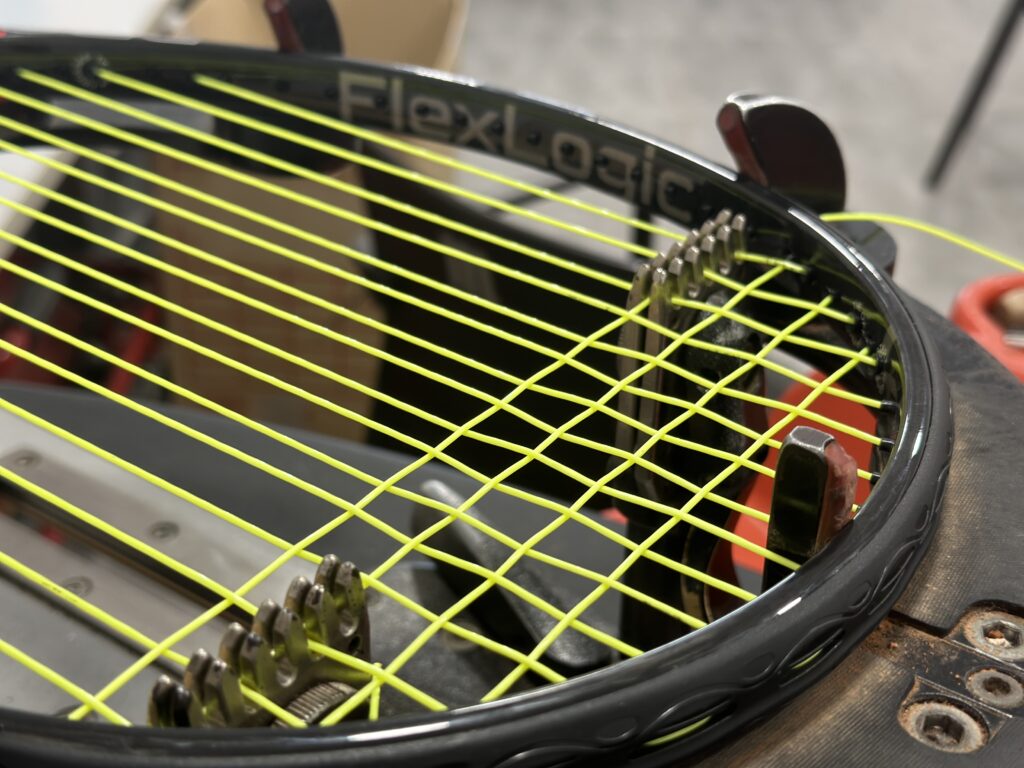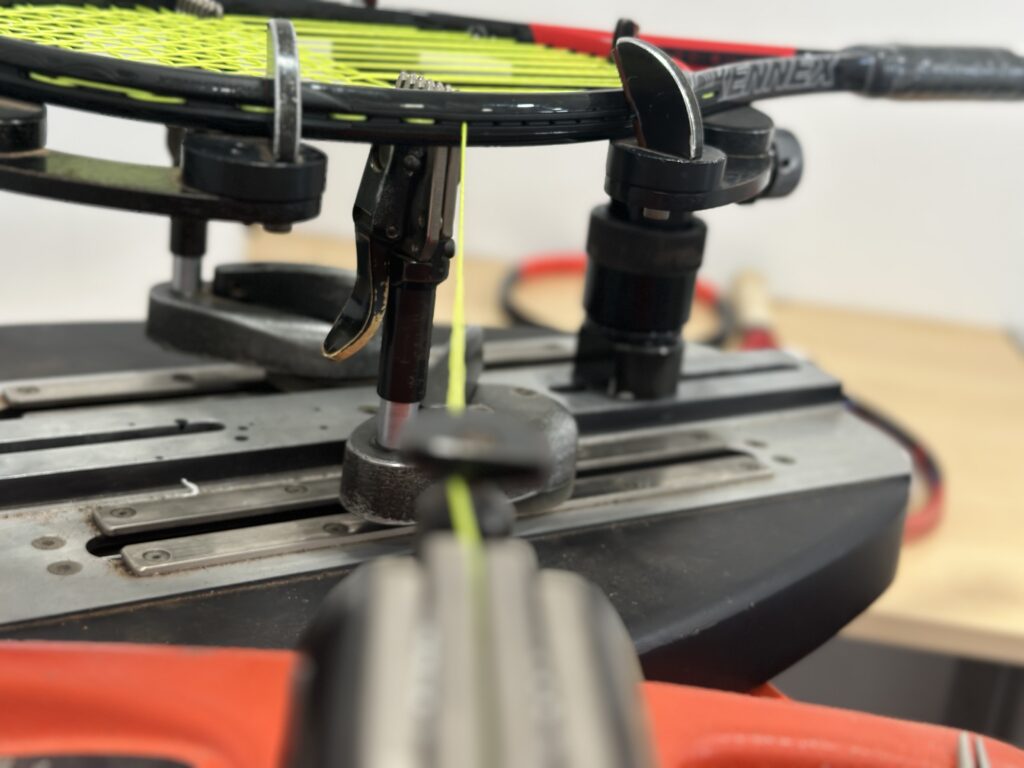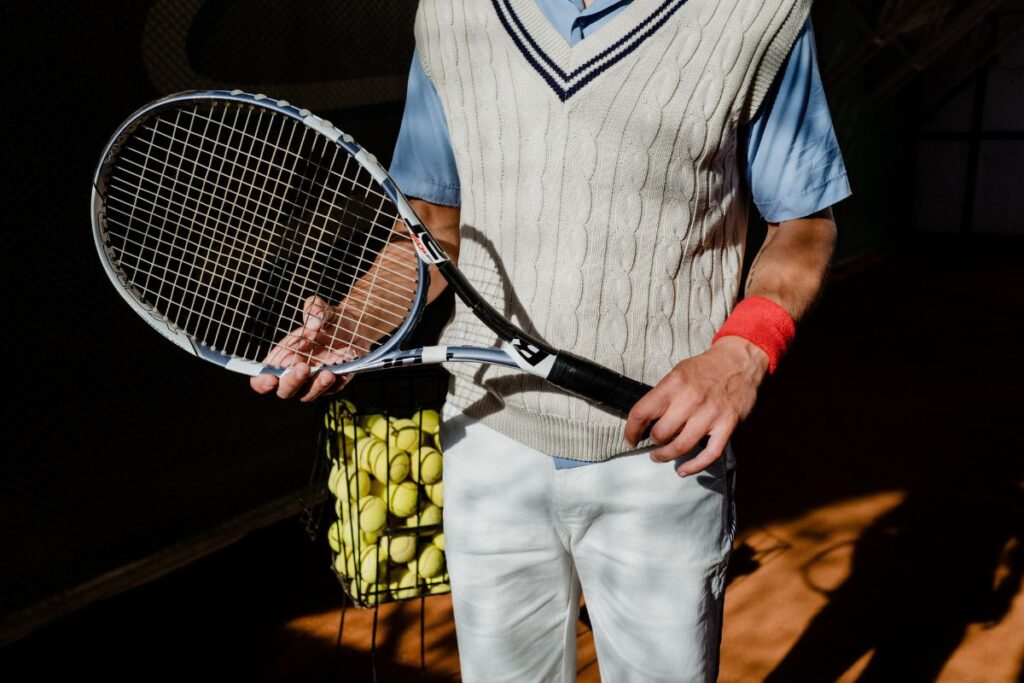Tennis strings are a major player in the practice of this wonderful sport. It also needs to be underestimated. It is very important. There are many types of strings, different materials, and different functions. There are strings for those who want to hit hard, those who have a good touch, beginners, and advanced players.
Table of Contents
String Materials and Their Effects on Performance


The formula is clear. If a tennis player uses the wrong string, he will suffer on the court, he will make many mistakes, and of course, he will lose. On the other hand, if he can find the right string, he can develop his full potential, enjoy the court, and reach his best result.
Natural Gut Strings
Origins and History of Natural Gut Strings
It’s a classic. Tennis strings started as gut strings. That’s right. They were made from the guts of animals. Nowadays, they are also made in this way. They are made from the guts of sheep. An almost handmade washing, training, and drying process turns them into tennis strings.
Characteristics and Advantages
It is the best string I have ever played with. The touch is amazing. The feeling is excellent. This string transmits the effects very well. It is great. But it is always very difficult to play with this kind of string.
Disadvantages and Considerations
Natural gut strings are very expensive. Excessively expensive. And they break very easily. Natural strings can last about 15 to 20 minutes for professional players. For this reason, it is very rare to see any player playing with this type of string on the circuit. Another disadvantage is that they need to stay dry. If they get wet, they lose all their characteristics, and you must change them for the next game. Another disadvantage is that they lose tension very quickly. So if you play once a year, don’t wear them. You won’t have any tension in the strings for your next game next year.
Synthetic Gut Strings
As an alternative, we can find synthetic gut. It is much cheaper and may come close to the qualities offered by natural strings.
Introduction to Synthetic Gut Strings
The natural gut is composed of very thin and long yarns that intertwine with each other along the entire string length. The synthetic gut has the same structure but has nylon yarns. Many synthetic gut strings are composed of strings of different thicknesses, looking for different configurations to offer the player more control, strength, or both.
Characteristics and Advantages
It is cheaper than a natural gut. It is not afraid of water. It keeps the tension higher. Usually looking for more comfort and feel, this string is for you if you are a player who doesn’t hit very hard.
Drawbacks and Considerations
Synthetic gut, like the natural gut, is not made for hard-hitting. You will not be comfortable with this string if you are a hard hitter.
Nylon Strings
Synthetic gut strings are made of nylon, but in the store, you can find nylon strings that are not synthetic gut. This leads to a little confusion among consumers. In other words, synthetic gut strings are made of nylon but of higher quality and different technology. Without the word “gut” on the label, nylon rope is also good, but not as good. The difference is in the thickness of the filaments—thinner, better quality, better performance, and more expensive.
Overview of Nylon Strings
Nylon strings are also made of many filaments but have thicker nylon yarns. They are good strings, much cheaper, and only sometimes strong. I say this for players who like to hit hard.
Characteristics and Advantages
They are good strings, cheaper, and have great touch and sensation. As mentioned before, good touch, low durability.
Disadvantages and Considerations
It does not offer as much feel as a natural gut, but the price makes up for it. Choose the thicker string if you want to hit hard with it.
Polyester strings
It is an ideal string for young players of good level. It is a very stiff string. It is like a wire. It has no elasticity at all. If you take this string and bend it, it stays like that, as if it were made of iron.
Overview of Polyester Ropes
It is a rope made to last a long time. It is the opposite of guts and nylon strings. It is made for players who hit very hard, train many hours a week, and can only spend a little money on strings. A junior player who trains 5 hours a day, and breaks 4 or 5 times a week, has to play with polyester strings.
Characteristics and Advantages
Very stiff string. Does not break easily. Do not ask for control or sensations.
Disadvantages and Considerations
Best choice for a strong player. If you want to compensate for the lack of feel, try to reduce the thickness. The thinner the polyester string, the more feel it will give you. If you are breaking a lot, increase the thickness again. It is a string made to last a long time.
Kevlar Ropes
Only Kevlar ropes can outlast polyester strings.
Kevlar String Overview
If polyester ropes are very strong, Kevlar ropes are even stronger. The advantage here is that they do not lose any tension. The material is strong and durable—there is no feeling of comfort.
Features and Advantages
If you break a lot of strings, hit very hard, use the effects, and buy a Kevlar string. Just don’t ask for comfort.
Disadvantages and Considerations
They rarely break. They maintain tension. They are more expensive than polyester strings. They are very demanding ropes, and if you do not have good technique or strength, these ropes are not for you.
Multifilament Ropes
Any rope composed of different filaments of fine yarns is a multifilament rope.
Overview of Multifilament Strings
We have already talked about synthetic gut ropes and nylon ropes. The engineers working on tennis strings want to offer durability and feel in the same product. I have not seen a string that can satisfy everyone. We always move between control and resistance. Multifilament strings are finding this balance more successfully. Some strings combine Kevlar filaments with nylon, nylon, and polyester. Different thicknesses, with sheaths between them. It is a real spectacle to see a multifilament string under a microscope.
Characteristics and Advantages
There are many types, and you must test the strings to find your ideal configuration. They are more durable. They always give you a better performance if you have chosen them well. They hold tension very well and are not afraid of water.
Disadvantages and Considerations
They are a balance between performance and price. As there are many types, I think finding the right string for you is easier. Whether you have an aggressive style with very strong strokes or if your tennis is based on touch and good feel.
Hybrid Stringing
The racquet has horizontal and vertical strings. This gives us the possibility to combining different types of strings in the racquet.
Introduction to Hybrid Stringing
If you are looking for durability, you hit very hard but also want control. You can string soft nylon or synthetic gut and kevlar cross strings. This combination will give you a good result.
Advantages of Combining Different String Materials
Combining strings lets you play with different thicknesses, types, and tensions. There is no fixed rule for this. It’s a matter of trying and knowing what you’re looking for. Remember, the more elastic the string, the more control and feel you will have. The stiffer the string, the more durability it will offer.
Popular Hybrid String Combinations
We will always look for a balance between durability and feel. In reality, if you don’t hit very hard, the string lasts a year, or you have never even broken a string before, you don’t have to think about combinations. Combining different types of strings can be interesting to increase control for a player who hits hard and breaks a lot.
A good combination would be soft strings on the horizontal and hard strings on the vertical strings.
How to Choose the Right Material for Strings

Choosing the right string material is an art married with science and can mean the difference between a satisfying game and a mediocre performance. This is where style, skill level, and personal preference come into play.
Factors to Consider When Selecting Strings
Playing Style
You will probably prefer more durable strings, such as polyester or Kevlar if you are an aggressive player who tends to hit the ball hard. On the other hand, if you are more inclined to a soft, tactical game, natural or synthetic gut strings might be your best choice.
Tennis Level
A beginner player might not notice the subtleties between different types of strings, while an experienced player has a better feel for what they need. More experienced players often opt for hybrid strings to get the best of both worlds.
Personal Preferences
String choice also has much to do with the type of feel you want in your game. Some players are looking for more power. Others are looking for more control and feel.
Tips for Experimenting With Different Materials
- Start by trying different tensions with the same type of string. This will give you an idea of how tension affects play.
- Talk to other players and ask for recommendations. Sometimes another player’s experience can give you an idea of what to try next.
- Don’t be afraid to mix and match. Hybrid strings can be a way to get the specific characteristics you are looking for.
Frequently Asked Questions
What are the best tennis strings made of?
There is no one-size-fits-all answer, as it depends on the player’s needs and preferences. Natural gut strings are highly rated for their feel, but polyester and kevlar strings are preferred for their durability.
Is natural gut string durable?
Natural gut is known for its unmatched feel, but its durability could be better, especially when compared to synthetic strings. It can break easily, especially under extreme conditions.
What is the tensile strength of a tennis string?
Tensile strength varies depending on the material and construction of the string. Kevlar strings, for example, are especially strong. However, it is important to remember that strings should be replaced regularly to maintain optimal performance.
How to choose tennis strings?
Consider your playing style, skill level, and personal preferences. Also, experiment with different materials and tensions until you find the set that suits your needs.
Conclusion
Choosing the right string is essential for any tennis player, whether a novice or a pro. String material, tension, and construction can influence performance, feel, and ultimately the game’s enjoyment. Investing time in research and experimentation is critical to find the perfect string. After all, a good string improves your game, can protect your arm, and ensure you enjoy the sport for a long time.